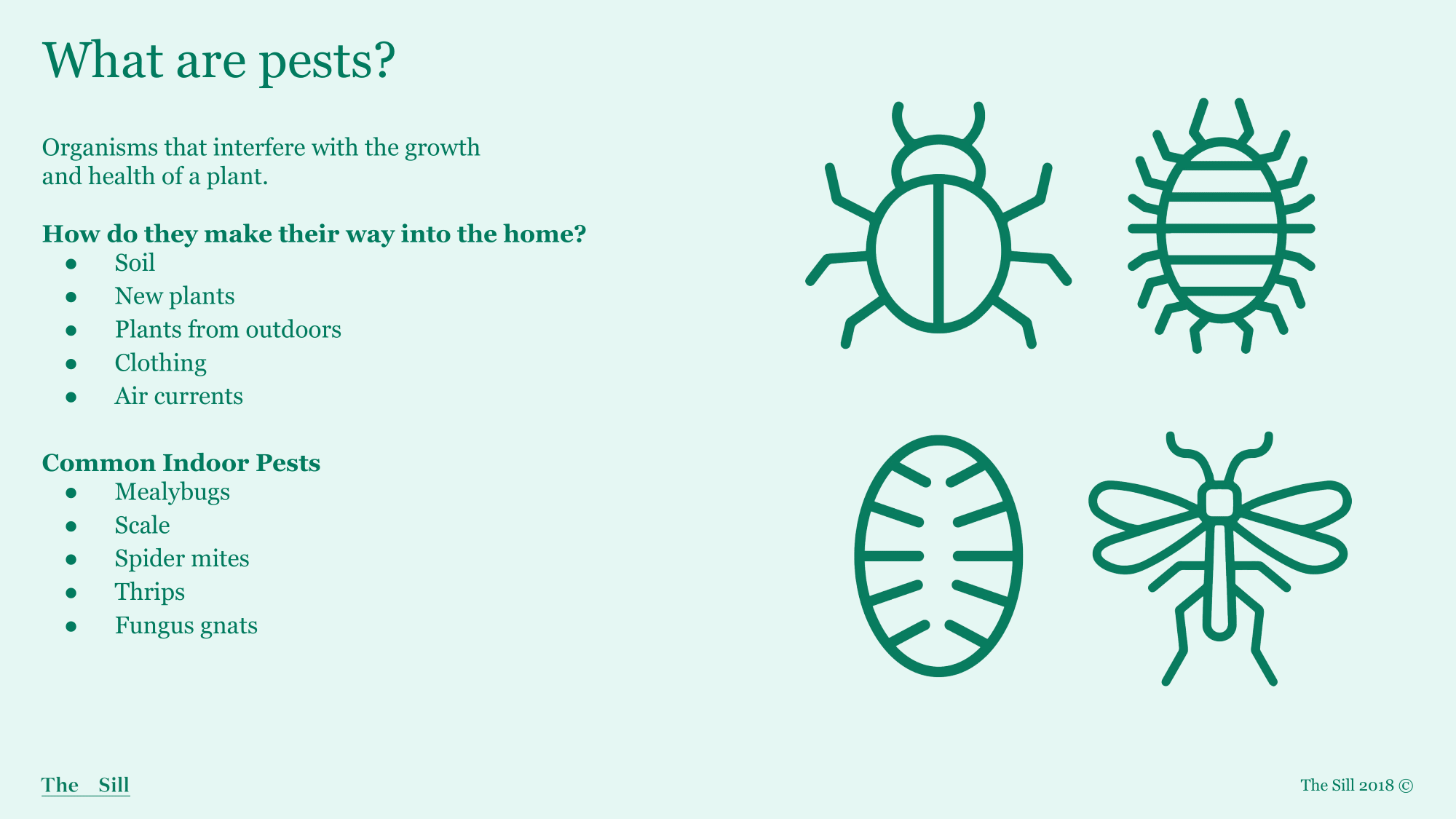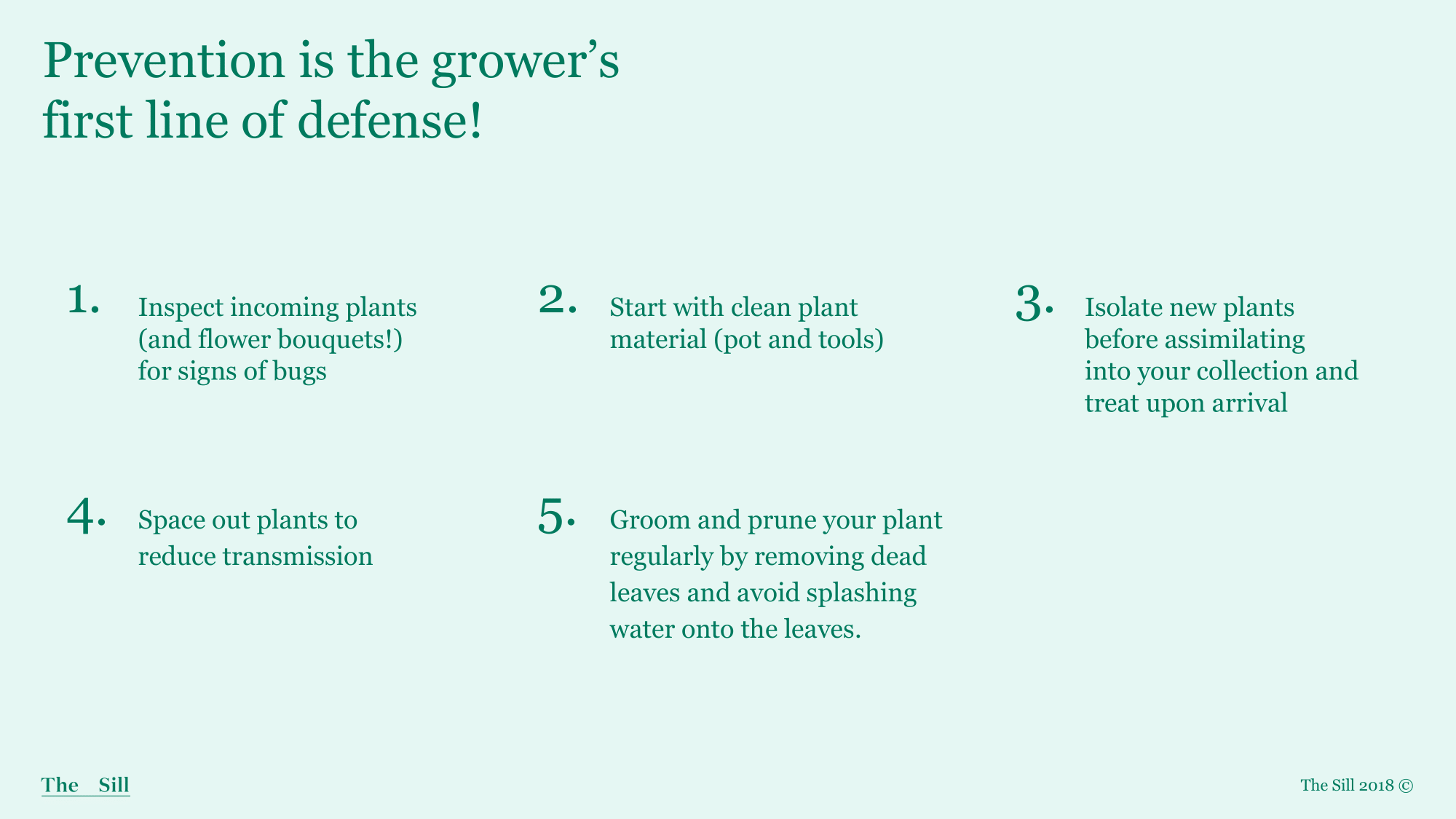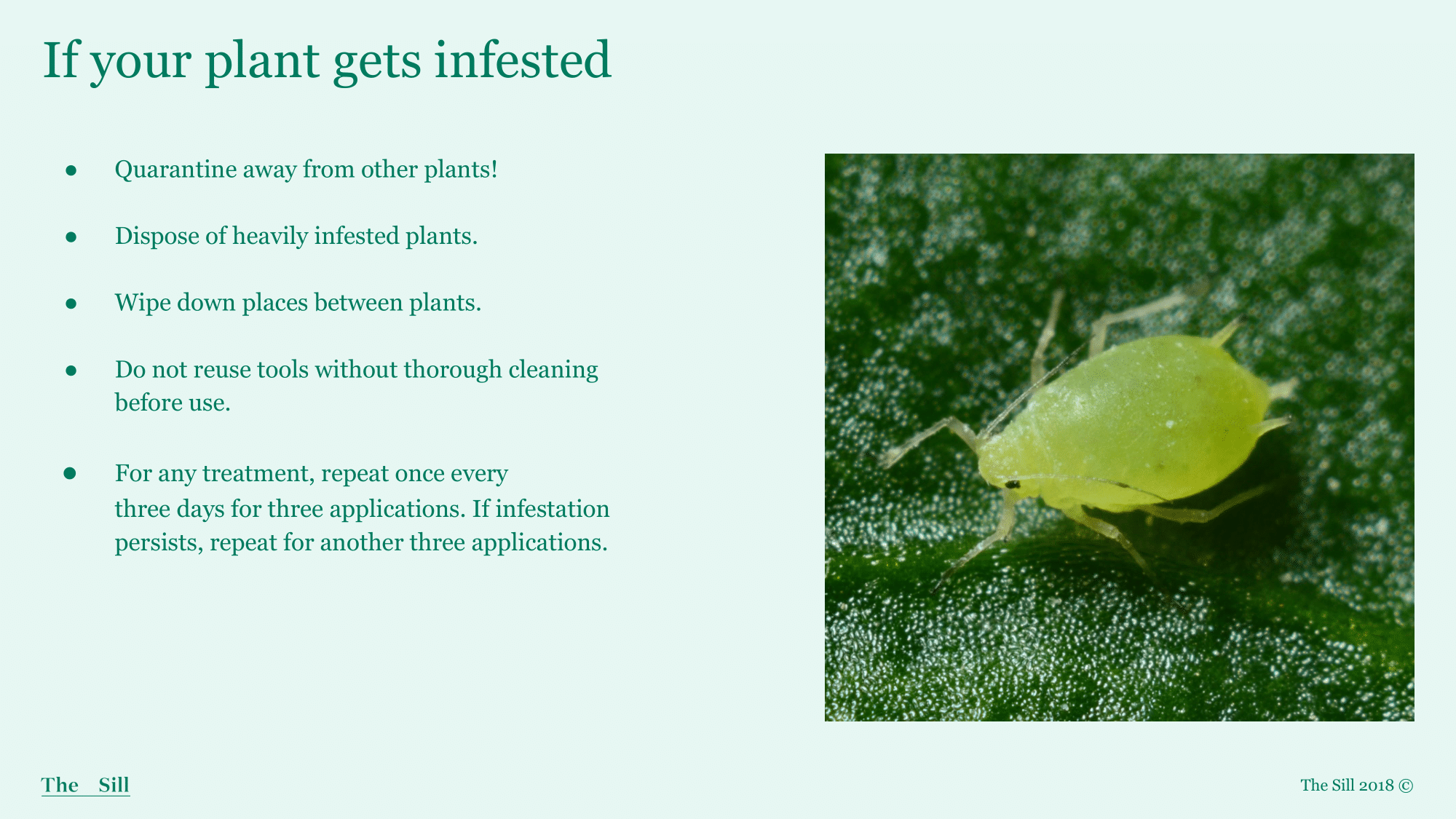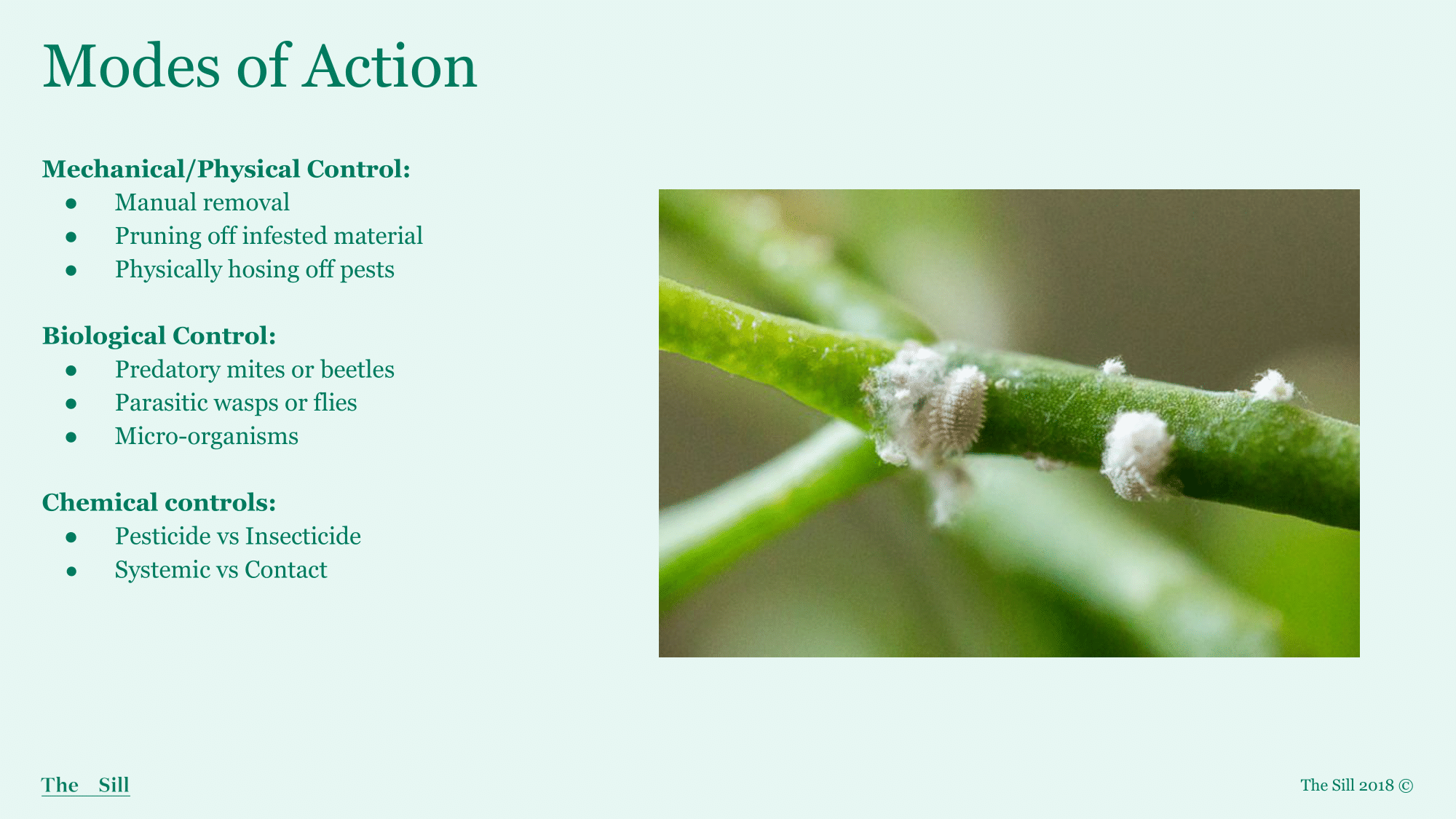What Are Pests?
Part 1 of 3

Overview
Since some bags of soil are sold outdoors and aren’t completely sealed pests can make their way in and lay eggs. New plants is usually the primary way pests make their way into our homes when we don’t inspect or treat them when adding them to our collection, same when moving plants that were outside indoors. They can also grab onto your clothing when laying in the grass, or from air currents from open windows or doors (spider mites, fungus gnats).
While there are other plant pests out there Mealybugs, Scale, Spider mites, Thrips & even Fungus gnats are the most commonly found on indoor plants which we will be focusing on and discussing today.

Prevention
Prevention is the best way to keep pests away from your plants and from further spreading in the home. Floral bouquets are also prone to having insects on them so be sure to check any incoming plants and even live bouquets you bring into the home for pests.
Make sure any planters you’re using and tools for repotting are sterilized and clean if not brand new.
Spray any new plants coming into your space, and space them out from others in your collection to reduce the spread if a pests rises. Even if you don’t visibility see pests it’s best to treat anyways since most can be microscopic and hard to notice.

How to Treat
- Quarantine - It’s best to isolate plants that are infested with a pest to reduce the spread to other plants. At times, I like to keep plants with pests in a quarantined area away from others, usually in a corner of my home where I have a grow light so they can still get the care they need without being close to my other plants in the window.
- Dispose - Sometimes when a plant is just so heavily infested it’s best to just cut your losses and throw it out rather than wasting time/money on treating it repeatedly and it possibly spreading to the rest of your collection.
- Wipe Down - Pests, their eggs or even larvae can easily fall off a plant and surround the area they are in. This is why when you find pests on a plant, you should inspect nearby plants and wipe down the surfaces between where the plant was to help reduce the spread.
Always sterilize pruners or any tools you use between each plant, especially if one had a pest. It’s also best to sterilize any pots that previously housed a plant with a pest in it to ensure there’s no larvae/eggs hanging around waiting for a new host.After you’ve completed the 3rd application and the problem persists, you can treat again for another 3 applications but sometimes it’s best to use an alternative method of treatment since pests can build resistance to the same treatment you keep using.

Modes of Action
- Manual Removal - Primarily done with Scale insects or spot treating adult mealybugs when you physically see adults present.
- Pruning - At times if a plant is heavily infested in certain areas it’s best to just prune off that material to help eradicate them faster.
- Hosing Off - Taking your plant outside (if it’s warm) or into your sink or shower with a hose to hose off pests can make pest management a bit easier before treating with an insecticide. When doing so, make sure the plant has completely dried from the water before treating.
- Biological Controls - These are predatory insects that are natural predators to these insects in the wild that can do the work for you if you feel comfortable with having them in the home. They are primarily sold online and shipped to you with instructions for use. They are primarily best for larger infestations or when you have a bunch of plants riddled with pests. You release them onto your plants, and they only stay alive as long as they have a food source. Therefore, they usually die off once there are no longer pests present and they won’t come near you or roam around your house. However, there are some that are attracted to light so some might accidentally fly toward your windows.
- Chemical Controls - A pesticide is used to kill off insects, fungus, bacteria, and plant diseases. While an insecticide is used specifically to target and kill insects. Therefore, insecticide can be more useful in killing off pests (which are insects except spider mites) rather than getting a pesticide used to treat a wide array of things and may not be as effective. For spider mites, you want to make sure you get a treatment that labels them as a target pests since not all insecticides can treat spider mites.
- Systemic vs Contact - Systemic treatments are those that travel systemically through the plant tissue of plants so once a pests takes a bite they die off. Whereas a contact treatment only kills pests upon contact and while the solution is wet, so once the solution is dry if there are still pests they won’t die until the next treatment. Either or works depending on how you want to go about it in the best way for you.
